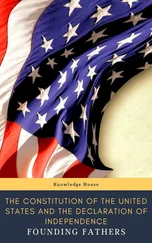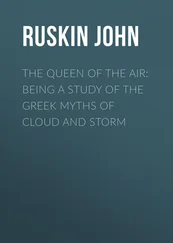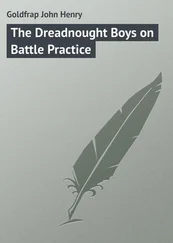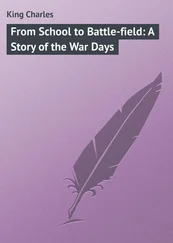John Frost - The Indian - On the Battle-Field and in the Wigwam
Здесь есть возможность читать онлайн «John Frost - The Indian - On the Battle-Field and in the Wigwam» — ознакомительный отрывок электронной книги совершенно бесплатно, а после прочтения отрывка купить полную версию. В некоторых случаях можно слушать аудио, скачать через торрент в формате fb2 и присутствует краткое содержание. Жанр: foreign_antique, foreign_prose, на английском языке. Описание произведения, (предисловие) а так же отзывы посетителей доступны на портале библиотеки ЛибКат.
- Название:The Indian: On the Battle-Field and in the Wigwam
- Автор:
- Жанр:
- Год:неизвестен
- ISBN:нет данных
- Рейтинг книги:5 / 5. Голосов: 1
-
Избранное:Добавить в избранное
- Отзывы:
-
Ваша оценка:
- 100
- 1
- 2
- 3
- 4
- 5
The Indian: On the Battle-Field and in the Wigwam: краткое содержание, описание и аннотация
Предлагаем к чтению аннотацию, описание, краткое содержание или предисловие (зависит от того, что написал сам автор книги «The Indian: On the Battle-Field and in the Wigwam»). Если вы не нашли необходимую информацию о книге — напишите в комментариях, мы постараемся отыскать её.
The Indian: On the Battle-Field and in the Wigwam — читать онлайн ознакомительный отрывок
Ниже представлен текст книги, разбитый по страницам. Система сохранения места последней прочитанной страницы, позволяет с удобством читать онлайн бесплатно книгу «The Indian: On the Battle-Field and in the Wigwam», без необходимости каждый раз заново искать на чём Вы остановились. Поставьте закладку, и сможете в любой момент перейти на страницу, на которой закончили чтение.
Интервал:
Закладка:
The captives were now well provided with food, but were compelled to sleep upon the cold ground in a wigwam. As the wigwam was often removed from place to place for the convenience of hunting, and the winter was approaching, the lodging became disagreeable, and the small children suffered severely. When the chief arrived at the Indian fort, he was received with great rejoicing, and every savage manifestation of respect. The shouting, drinking, feasting, and firing of guns continued several days.
The chief had not long been at home, before he went out on a hunting excursion, and was absent about a week. Mrs. Hanson was left in his wigwam, and ordered to get in wood; gather nuts, &c. She diligently performed what she had been commanded; but when the chief returned, he was in an ill-humor; not having found any game. He vented his spleen upon the poor captives, of course. Mrs. Hanson was roughly treated, and her son knocked down. She did not dare to murmur, however, fearing his anger.
The squaw and her daughter, sympathized with the captives, informed them that the chief was anxious now to put them to death, and that they must sleep in another wigwam that night. During the night Mrs. Hanson slept very little, being in momentary expectation that the chief would.=come to execute his threat. But the chief, weary with hunting, went to rest and forgot it. The next morning he went out hunting again, and returned with some wild ducks. He was then in a better humor, and all had plenty to eat. The same state of things occurred very frequently, and Mrs. Hanson was in constant fear of death. Sometimes she suffered much from want of food.
By this time, hard labor, mean diet, and want of natural rest, had reduced Mrs. Hanson so low, that her milk was dried up, and her babe thin and weak. By the advice of an Indian squaw, she made some nourishing broth for her babe, by broiling some kernels of walnuts, and mixing them with water and Indian meal. But her joy at the success of this invention was clouded by the action of the chief. Observing the thriving condition of the child, he made the mother undress it, and told her he intended to eat it as soon as it was fat enough. This was a terrible blow to the hopes which Mrs. Hanson had begun to conceive, and his cruel treatment of her and her children was aggravated every day, till, at length, he fell violently ill, and for a time lingered on the brink of death. He thought that this was a judgment of God upon him for his cruelty, and he professed repentance. After this he soon recovered, and the captives were better treated.
The chief, a few weeks after his recovery, made another remove, journeying two days upon the ice, while the snow was falling. Mrs. Hanson soon perceived the object of his journey. The chief, with the hope of obtaining a ransom for his captives, wished to get nearer to the French. He visited the latter, but returned in a very bad humor. Mrs. Hanson was compelled to lodge in a sort of hole made in the snow, and covered with boughs, in order to keep from his presence.
At length the captives were taken to the French, and after some trouble and delay, ransomed for six hundred livres. They were treated very kindly and furnished with all those things of which they had been so long destitute. One month after they fell into the hands of the French, Mr. Hanson came to them with the hope of ransoming the other children and servant. With much difficulty he recovered his younger daughter, but the eldest was retained by the squaw to whom she had been given, as she intended to marry her to her son. No means could induce the squaw to surrender the daughter, and the party were forced to return without her. The servant was ransomed. On the 1st of July, 1725, the party arrived home, having been among the Indians and French more than twelve months, and, having suffered every hardship which the captive of the Indian generally endures.
Mr. Hanson could not rest while his daughter remained in the hands of the Indians, and he resolved to make another attempt to ransom her. On the 19th of February, 1727, he set out on his journey, but died on the way, between Albany and Canada. In the meantime, a young Frenchman interposed, and by marrying the daughter himself, secured her freedom; the Indians acknowledging the freedom of their captives as soon as married by the French. The daughter returned to her anxious and suffering mother and sisters, and thus gave them some consolation for the loss of Mr. Hanson.
THE STORY OF SHON-KA
R. CATLIN met with many interesting adventures, while visiting the numerous and savage tribes of the great west, for the purpose of seeing and judging for himself, of their habits and modes of life. One of these he details in his valuable work, as “The Story of the Dog,” and as it is a fine illustration of the dangers encountered by adventurers among the Indians, and of the certainty of revenge which follows an injury, we here insert it:
I had passed up the Missouri river, on the steamboat Yellow Stone, on which I ascended the Missouri to the mouth of Yellow Stone river. While going up, this boat, having on board the United States Indian agent, Major Sanford – Messrs. Pierre, Chouteau, McKenzie of the American Fur Company, and myself, as passengers, stopped at this trading-post, and remained several weeks; where were assembled six hundred families of Sioux Indians, their tents being pitched in close order on an extensive prairie on the bank of the river.
This trading-post, in charge of Mr. Laidlaw, is the concentrating place, and principal depot, for this powerful tribe, who number, when all taken together, something like forty or fifty thousand. On this occasion, five or six thousand had assembled to see the steamboat, and meet the Indian agent, which, and whom they knew were to arrive about this time. During the few weeks that we remained there, I was busily engaged painting my portraits, for here were assembled the principal chiefs and medicine-men of the nation. To these people, the operations of my brush were entirely new and unaccountable, and excited amongst them the greatest curiosity imaginable. Every thing else, even the steamboat, was abandoned for the pleasure of crowding into my painting-room, and witnessing the result of each fellow’s success, as he came out from under the operation of my brush.
They had been at first much afraid of the consequences that might flow from so strange and unaccountable an operation; but having been made to understand my views, they began to look upon it as a great honor, and afforded me the opportunities that I desired; exhibiting the utmost degree of vanity for their appearance, both as to features and dress. The consequence was, that my room was filled with the chiefs who sat around, arranged according to the rank or grade which they held in the estimation of their tribe; and in this order it became necessary for me to paint them, to the exclusion of those who never signalized themselves, and were without any distinguishing character in society.
The first man on the list, was Ha-wan-ghee-ta, (one horn,) head chief of the nation, and after him the subordinate chief, or chiefs of bands, according to the estimation in which they were held by the chief or tribe. My models were thus placed before me, whether ugly or beautiful, all the same, and I saw at once there was to be trouble somewhere, as I could not paint them all. The medicine-men or high priests, who are esteemed by many the oracles of the nation, and the most important men in it – becoming jealous, commenced their harangues, outside of the lodge, telling them that they were all fools – that those who were painted would soon die in consequence; and that these pictures, which had life to a considerable degree in them, would live in the hands of white men after they were dead, and make them sleepless and endless trouble.
Читать дальшеИнтервал:
Закладка:
Похожие книги на «The Indian: On the Battle-Field and in the Wigwam»
Представляем Вашему вниманию похожие книги на «The Indian: On the Battle-Field and in the Wigwam» списком для выбора. Мы отобрали схожую по названию и смыслу литературу в надежде предоставить читателям больше вариантов отыскать новые, интересные, ещё непрочитанные произведения.
Обсуждение, отзывы о книге «The Indian: On the Battle-Field and in the Wigwam» и просто собственные мнения читателей. Оставьте ваши комментарии, напишите, что Вы думаете о произведении, его смысле или главных героях. Укажите что конкретно понравилось, а что нет, и почему Вы так считаете.









![John Bruce - The Lettsomian Lectures on Diseases and Disorders of the Heart and Arteries in Middle and Advanced Life [1900-1901]](/books/749387/john-bruce-the-lettsomian-lectures-on-diseases-and-disorders-of-the-heart-and-arteries-in-middle-and-advanced-life-1900-1901-thumb.webp)


